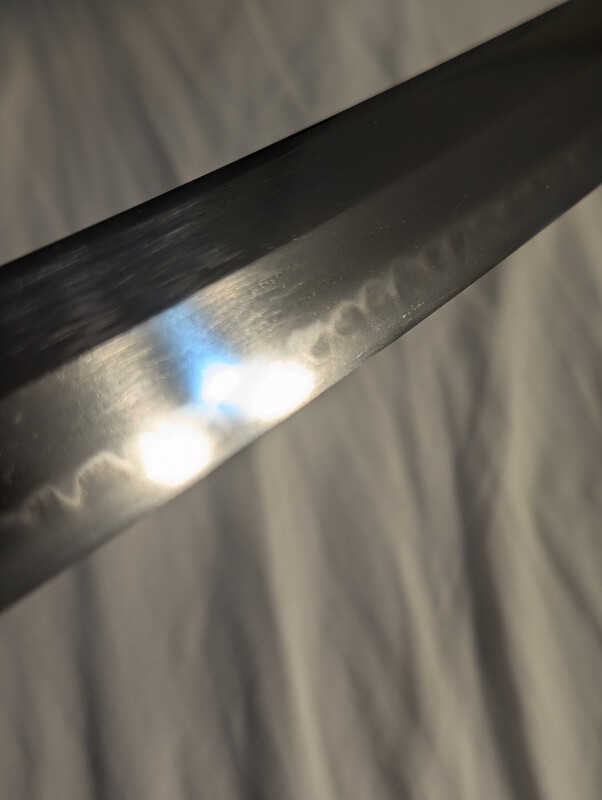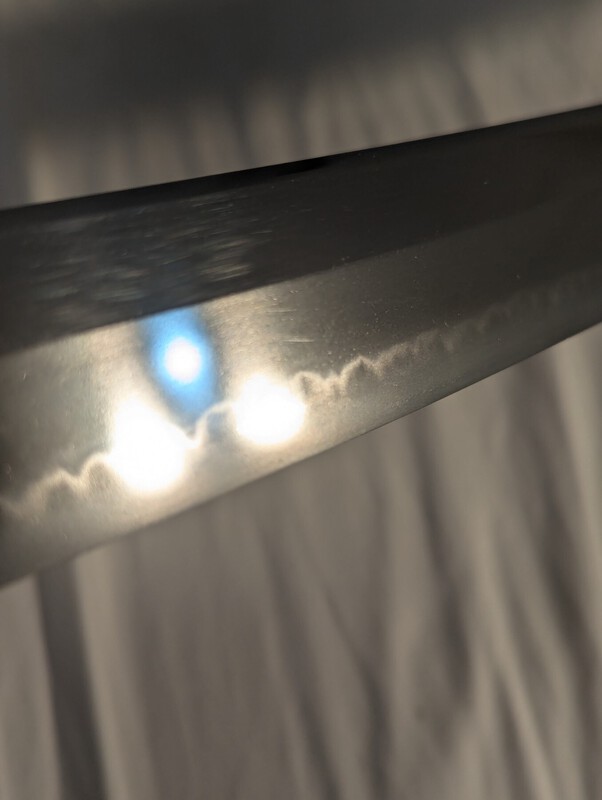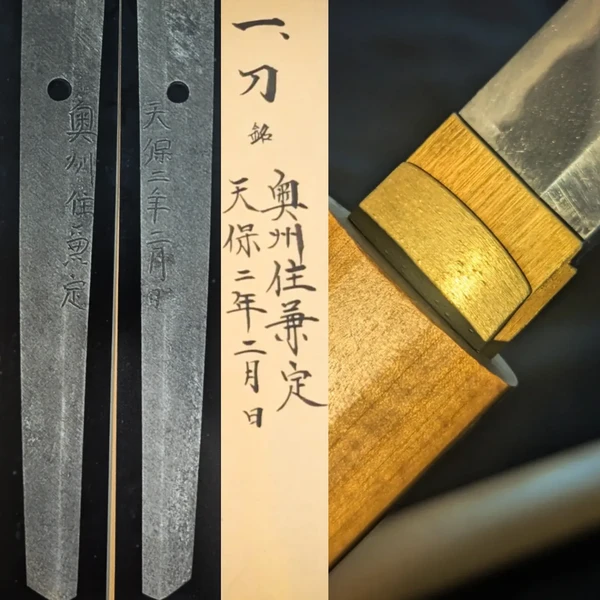-
Posts
4,935 -
Joined
-
Last visited
-
Days Won
132
Content Type
Profiles
Forums
Events
Store
Downloads
Gallery
Everything posted by Ray Singer
-
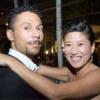
Sukenaga & Osafune?
Ray Singer replied to Bruce Pennington's topic in General Nihonto Related Discussion
Bizen Osafune ju refers to the province and village. On the other side is the school, title and smith name. Osafune village is probably the most famous center of sword making in the history of the craft, and may be the location responsible for producing more swords than any other in Japan (Seki being another). -
According to the nagasa you provided, this is a wakizashi. You wrote 'nihonto?', so yes to confirm this is in fact an older traditionally made Japanese sword. No later than Edo period, with the koshirae being a WWII kaigunto (naval mounting). And it is uncommon for there to be bo-hi on just one side of the sword with no horimono on the other ( compared with having bo-hi on both sides, or some combination of different horimono types).
-
Listing a very nice koto Bizen katana with a vivid utsuri, having kanteisho attributing the sword to Bizen Osafune Sukesada of the Daiei period (circa 1521). This is early within the Sukesada lineage, and several smiths are said to have been working during this time period. The blade has a 66.36cm nagasa, and is in polish with gold foil habaki and shirasaya. It is also accompanied with an oshigata by the previous owner. $4,250 (+ shipping & PP)
-
Bishu (Owari) Fujiwara ___ (the remainder is cut off).
-

Four nice gendaito in gunto koshirae
Ray Singer replied to Ray Singer's topic in Swords and Edged Weapons
-

Four nice gendaito in gunto koshirae
Ray Singer replied to Ray Singer's topic in Swords and Edged Weapons
-

Four nice gendaito in gunto koshirae
Ray Singer replied to Ray Singer's topic in Swords and Edged Weapons
-

Four nice gendaito in gunto koshirae
Ray Singer replied to Ray Singer's topic in Swords and Edged Weapons
-

Four nice gendaito in gunto koshirae
Ray Singer replied to Ray Singer's topic in Swords and Edged Weapons
Kojima Kanemichi KANEMICHI (兼道), Shōwa (昭和, 1926-1989), Gifu – “Nōshū Seki-jū Kanemichi kore o saku” (濃州関住兼道作之), “Nōshū Seki-jū Kojima Kanemichi kore o saku” (濃州関住小島兼道作之), real name Kojima Tokijirō (小島時次郎), born July 1st 1902, he first studied under the Zenjō Kaneyoshi-student Kojima Katsumasa (小島勝正) and later also underWatanabe Kanenaga (渡辺兼永), later he trained many swordsmiths himself, he signed first with Kanetoki (兼時) and worked during World War II as a rikugun-jumei-tōshō, he died on Februar 15th 1983, kihin no retsu (Akihide), Special Honor Seat at the 6th Shinsaku Nihontō Denrankai (新作日本刀展覧会, 1941) -
I will be listing four high quality gendaito with shingunto and kaigunto koshirae during the next day. All are in polish with new habaki and shirasaya with accompanying gunto koshirae. A preview below and more details to come soon. - Kotani Kaneyoshi - $4,500 + shipping and PayPal - Kazunori - $4,750 + shipping and PayPal - Hokke Saburo Nobufusa - $5,500 + shipping and PayPal - Kojima Kanemichi - $5,750 + shipping and PayPal Please message me with any questions
-
Takamasa, September 1943
-
Magoroku Kanemoto refers to the second generation, Saijo smith.
-
https://nihonto.com/magoroku-kanemoto-孫六兼元/
-

Translation Help: Battle Damaged Blade
Ray Singer replied to chgruener's topic in Translation Assistance
-
Very little detail can be seen in these photos Nick. I would suggest bringing it to show one of the upcoming meetings of the New York Token Kai. https://www.ny-tokenkai.org/
-
Yes, unfortunately appears to be a Chinese fake.
-
The owner of the Kanesada katana I listed on consignment is offering a very aggressive discount on this piece down to $3,400 + shipping and PayPal. This is less than half of what he paid for the sword originally, and is a bargain at this price. The sword is healthy with no issues, and is in full Japanese polish and restoration with current NBTHK Hozon kanteisho. I'm providing a bio on the smith below. KANESADA(兼定), 10th gen., Tenpo (天保,1830-1844), Oshū – “Oshü-jü Kanesada”(奥州住兼定),“Aizu-jū Kanesada”(会津住兼定),“Mutsu Aizu-jū Kanesada”(陸奥会津住兼定),“Öshū Aiyō-jū Kanesada”(奥州会陽兼定), “Mutsu Aifu-shin Kanesada”(陸奥会府臣兼定,“Kanesada, retainer of Mutsu’s Aizu fief”), real name Fujiwara Omi (古川近江), he initially bore the first name Gyōzō (業蔵), he changed his name from Kanesada to Kaneuji (兼氏) when his successor received the honorary title Izumi no Kami, it is said that he had also studied under the 4th generation Aizu Kanetomo (兼友) in his younger years, he was employed by the fief in Tenpō six (天保,1835), i.e. two years after his father’s death, receiving the rank of a Kõga and a stipend for the support of six persons, in Tenpo twelve (1841), his zeal and diligence in service earned him the samurai rank of Kaisho-jiban (会所次番), and due to his continuous efforts, he was granted the rank of Dokurei (独礼) in Ansei five (安政, 1858), we know some joint works with Miyoshi Nagamichi (三善長道), he died on the 17th day of the ninth month Meiji two (明治,1869), shinogi-zukuri, iori-mune, thick kasane, high shinogi, shallow sori, little tapering, altogether a grand and magnificent sugata, he made mostly katana and wakizashi but there are also tanto extant, itame mixed with ko-mokume, sometimes also mixed with masame, the steel is very tightly forged and bright, suguba or ko-gunome in ko-nie-deki mixed with choji, there are asbi and sunagashi and the niviguchi is mostly wide, the bashi shows a long ko-maru or o-maru-kaeri and occasionally also yaki-kuzure, the tang is long and shows kiri or katte-sugari yasurime and a ha-agari kengyo-jiri, the mei is applied with a thick chisel and in a large manner
-

Want to buy honoki wood to build a shirasaya for a katana
Ray Singer replied to JunS's topic in Wanted to Buy
https://www.namikawa-ltd.com -
Yes, that's absolutely right. Sloppy typo on my part. 1941.
-
Is there an arsenal stamp?
-
Date is Showa 16 (1943). Mei is Yoshi__ (maybe Yoshiaki?)
-

Wakizashi double sided Mei translation help needed
Ray Singer replied to pt1093's topic in Translation Assistance
I believe it is: Bishu Osafune Sukesada Eiroku ni nen ni gatsu hi -
Bishu Osafune Sukesada
-
Please note a correction here that this should be Tomita rather than Takada.
-

Can someone please help me to translate the mei on this nakago?
Ray Singer replied to JunS's topic in Nihonto
That is my impression.












.thumb.jpg.9c11668f36630882cb0be20dd404b8c4.jpg)






.thumb.jpg.d014575b9cb4bb5331236107f12db1ab.jpg)






.thumb.jpg.067bdbfed82c392ecea2e897975ebdb3.jpg)




.thumb.jpg.3b64d65093306179616317594949f0db.jpg)

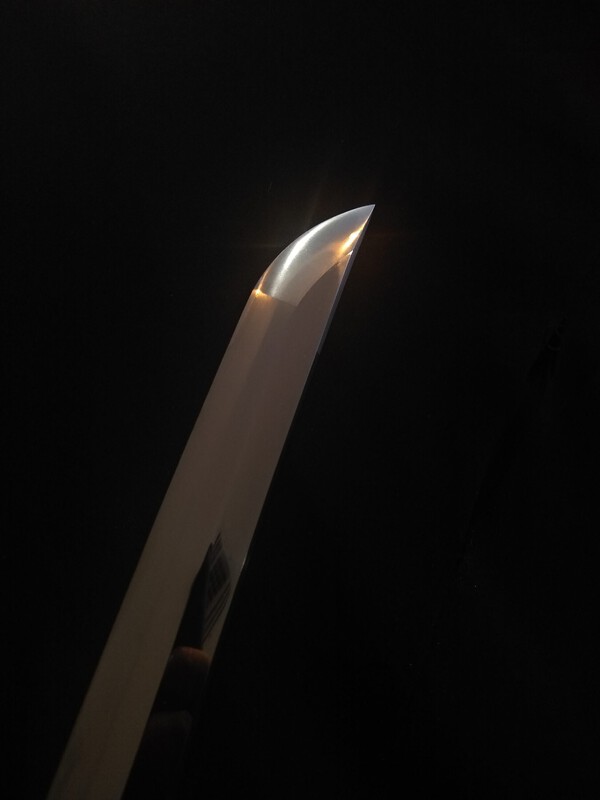
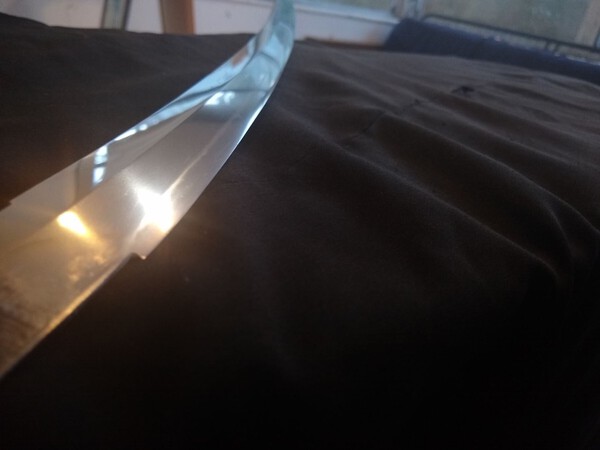
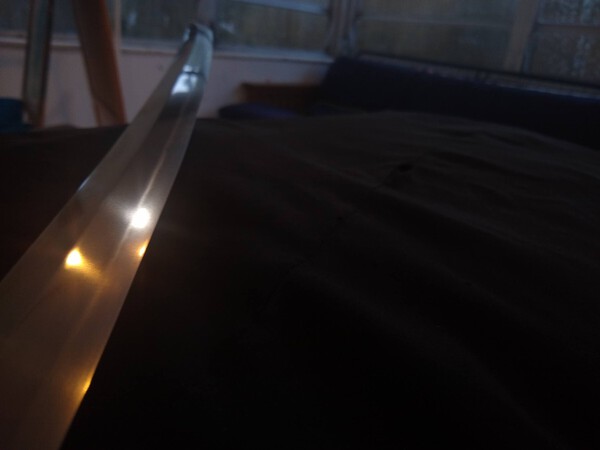
.thumb.jpg.2978a227551dd26f388ebfa9dc1f0268.jpg)



.thumb.jpg.c07a1bcee5e9ba572e97ff79c3bdbb54.jpg)



















